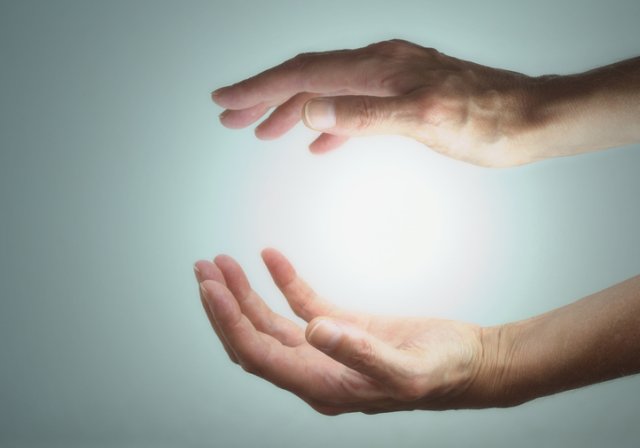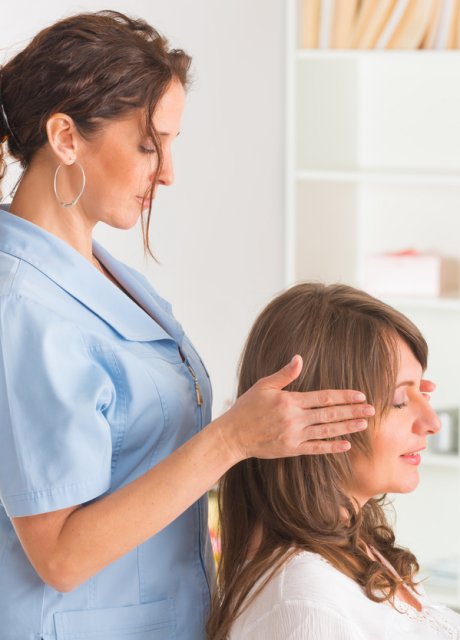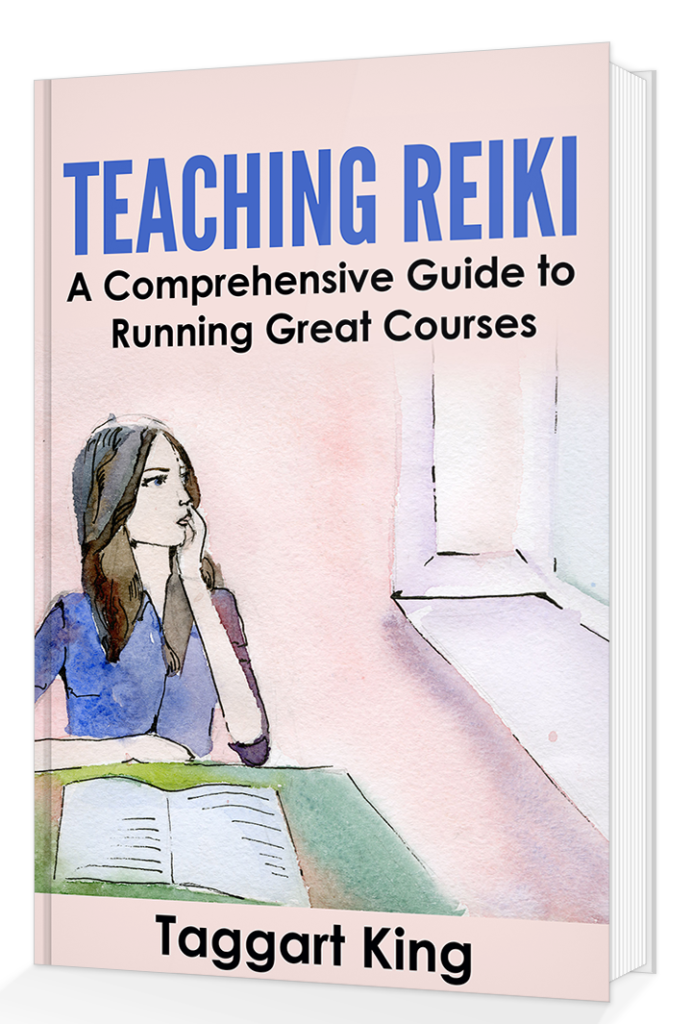People end up on First Degree courses for many reasons and come from an amazing variety of backgrounds, all attending for their own personal reasons. Reiki courses in the UK present a whole variety of approaches, some “traditional” Western-style, some more Japanese in content, some wildly different and almost unrecognisable, some free and intuitive, others dogmatic and based on rules about what you should always do and not do. Reiki is taught in so many ways, and students will tend to imagine that the way that they were taught is the way that Reiki is taught and practised by most other Reiki people.
What I have tried to do in this article is to present a simple guide to the essence of First Degree: what it’s all about and what we should be doing and thinking about to get the most out of our experience of Reiki at this level. My words are addressed to anyone at First Degree level, or anyone who would like to review the essence of First Degree.
First Degree is all about connecting to the energy, learning to develop your sensitivity to the flow of energy, working on yourself to develop your ability as a channel and to enhance self-healing, and working on other people. There are many approaches to doing these things, and I wanted below to touch on each area and to dispel some myths that may have been passed on.
Connecting to the energy
On your Reiki course you will have received some attunements or some empowerments. Attunements are not standard rituals within the world of Reiki and take many forms, some simpler and some more complex. They have evolved and changed greatly during their journey from teacher to teacher in the West. There is no “right way” to carry out an attunement and the individual details of a ritual do not matter a great deal. They all work. Equally, there is no “correct” number of attunements that have to be carried out at First Degree level. The number four is quoted often as being the “correct” number but this has no basis in Reiki’s original form, and whether you receive one, two, three or four rituals on your course, that is fine.
On your course you may have received some “empowerments” rather than attunements, though these are less common. The word “empowerment”, or “Reiju empowerment”, refers to a connection ritual that has come to us from some Japanese sources, and is closer in essence to the empowerment that Mikao Usui conveyed to his students. Again, there is no correct number of empowerments that has to be carried out. One is enough but it is nice to do more.
What we experience when receiving an attunement or an empowerment will vary a lot. Some people have fireworks and bells and whistles and that’s nice for them; other people notice a lot less, very little, or even nothing, and that’s fine too. What we feel when we have an attunement is not a guide to how well it has worked for us. Attunements work, and sometimes we will have a strong experience, but it’s not compulsory! Whether we have noticed a lot, or very little, the attunement will have given us what we need.
Since in Mikao Usui’s system you would have received empowerments from him again and again, it would be nice if you could echo this practice by receiving further empowerments (or attunements) and perhaps these might be available at your teacher’s Reiki shares or get-togethers, if they hold them. But it is possible to receive distant Reiju empowerments and various teachers make them freely available as a regular ‘broadcast’. This is not essential, and your connection to Reiki once given does not fizzle out, but it would be a beneficial practice if you could receive regular empowerments from someone.
Developing your Sensitivity to the energy
People’s experience of energy when they first start working with Reiki can vary. Some people notice more than others, particularly in the early stages, and if we perhaps notice less going on in our hands when compared with another student on the course we can become disillusioned to an extent: that little voice in your head says “I know Reiki works for everyone… but it’s not going to work for me. I knew it wasn’t going to work for me”. Well if this describes your situation then I can say to you that Reiki will work for you, and is working for you, and the vast majority of Reiki people can feel the flow of energy through them in some way, though your particular ‘style’ of sensing the energy may not involve the more usual heat, fizzing, tingling, pulsing etc. that many people experience. There are a few Reiki Master/Teachers out there who feel absolutely nothing in their hands, but this is not common, and Reiki is still working for them.
Sensitivity to the flow of energy develops over time, with practice. Some people are lucky enough to be able to feel quite a lot in their hands and in their bodies to begin with, but others have to be patient, trust that Reiki is working for them, and perhaps focus more on the feedback that they receive from the people that they treat, rather than what they feel – or don’t feel – in their hands.
It would be worthwhile if all First Degree students spent some time regularly practising feeling energy: between your hands, around your cat or dog or your pot plant or a tree, around someone else’s head and shoulders, over someone’s supine body, noticing any differences in the sensation in your hands as you move your hands from one place to another. Don’t expect to experience a particular thing or a particular intensity of feeling. Be neutral and simply notice what experience you have and how that experience might change from one area to another.
On some First Degree courses this process will be taught as “scanning”, where you hover your hands over the recipient’s body, drift your hands from one place to another, and notice any areas which are drawing more energy. This can provide some useful information in terms of suggesting additional or alternative hand-positions to use when you treat, and can suggest areas where you are going to spend longer when you treat.
Working on yourself
It is vital that after going on a First Degree course you establish a regular routine of working on yourself in order to develop your fledgling ability as a channel and to obtain the benefits that Reiki can provide in terms of balancing your life and self-healing. Most people decide to learn Reiki because they are looking for some personal benefits as well as looking to help other people, and the way to get the most out of the Reiki system is to work on yourself regularly.
On your First Degree course you will have been taught a self-treatment method, perhaps a Japanese-style meditation but more likely the Western “hands-on” self-treatment method. You will most likely have been given a set of hand-positions to use, but please remember that these positions are not set in stone and, particularly if some of the hand positions are quite uncomfortable to use in practice, you will develop your own style. It is fine to change the hand positions based on what feels right from one self-treatment to another, and you should do what feels appropriate. There is no “correct” set of positions that you have to use, and each hand-position does not have to be held for a particular period of time. Treat for however long you have time for, and however long feels right for each hand-position you decide to use.
Many people are taught that they have to do a “21 day self-treat”, and some people have the impression that they then do not need to self-treat any more. The “21 day” period has no real basis, and I can say that you ought to be thinking in terms of working on yourself long-term. To gain the greatest benefits from this wonderful system you need to persevere and make working with energy a permanent feature of your life with Reiki, a basic background practice, the effects of which will build up cumulatively as you continue to work with the energy.
You may have been taught a series of energy exercises and meditations called “Hatsurei ho” which comes from Japanese Reiki, and I can commend this practice to you. It is a wonderful way of grounding, balancing, and enhancing you ability as a channel, and should be a regular part of your Reiki routine.
Treating other people
First Degree is also about starting to work on other people, a process which also benefits the giver, so plus points all round really! A few students may have been taught not to treat others at First Degree, or for a particular prescribed period, but this is an unnecessary restriction and Reiki can be shared with other people straight away.
There are many different approaches to treating others, and we should not get bogged down with too many rules and regulations about how we ‘must’ proceed. Reiki can be approached in quite a regimented way in some lineages, and students may worry that if they are not remembering all the stages that they ‘have’ to carry out then they will not be carrying out the treatment properly. This is an unnecessary worry because treating other people is simple.
So here is a simple approach that you can use: close your eyes, maybe put your hands in the prayer position, and take a few long deep breaths to calm you and still your mind. You should have in mind that the energy you will channel should be for the highest good of the recipient, but there is no particular form of words that you need to use when commencing your treatment. Now we are going to focus your attention on connecting to the energy. Imagine that energy is flooding down to you from above, flooding through your crown, through the centre of your body, down to your Dantien (an energy centre two fingerbreadths below your tummy button and 1/3rd of the way into your body). Imagine the energy building up and intensifying there. You are filling with energy. Now direct your attention towards the recipient and imagine that you are merging with them, becoming one with them. Feel compassion and enjoy the moment.
You may now begin your treatment, and maybe it would be nice to rest your hands on their shoulders for a while, to connect to them and to get the energy flowing. What hand positions you use will vary depending on what you were taught – there are many variations – and they are all variations on a theme, a way of firing the energy from lots of different directions to give it the best chance of getting to where it needs to go. Hand-positions for treating others are not set in stone and do not have to be followed slavishly. They are just there as a set of guidelines to follow to build your confidence when treating others, and with time and practice you will start to leave behind these basic instructions and gear any treatment towards the needs of the recipient on that occasion, perhaps based on what you picked up when you were ‘scanning’ and perhaps based on intuitive impressions, where you feel drawn to a particular area of the body. Don’t try and work out ‘why’ you have felt drawn to a particular area of the body: just accept your impression and go with it.
Reiki is basically a hands-on treatment method, though for reasons of comfort and propriety you will choose to hover your hands over the recipient in some areas rather than resting on the body. I do not plaster my hands over the recipient’s face or throat, for example, because I think that this is uncomfortable and unsettling for the person you are working on.
You do not have to hover your hands for every hand position, as some people are taught, and equally you do not have to keep at least one hand in physical contact with the recipient’s body at all times, for fear of ‘losing’ your connection: your connection to the recipient is a state of mind, and where your hands are is irrelevant!
As you treat, you should aim to feel yourself merging with the energy, becoming one with the energy, to imagine yourself disappearing into the energy, and this can give you a quite blissful experience. Your mind may wander, particularly in the early stages of your Reiki practice, but you do not need to worry about this. If you notice thoughts intruding, pay them no attention; let them drift on like clouds. If you make a big effort to try and get rid of your thoughts then you will have in your head the original thoughts and then all the new thoughts about getting rid of the first lot of thoughts… you have made things worse! Just bring your attention gently back to the recipient, to the energy, feel yourself disappearing into the energy, merging with the recipient, and let the energy flow; your treatment can become a wonderful meditation.
It is not acceptable to chat to other people while giving a Reiki treatment. If you want to be an effective channel for the energy then you need to direct your attention to the work at hand and make sure you are not unduly distracted. For this reason, conversation between yourself and the recipient should be restricted. Reiki works best of you are still and focused, merging with the energy, in a gentle meditative state. Developing this state takes practice and you can’t do it properly if you are chatting.
You do not need to stay for a particular set amount of time for each hand position. Though it would be probably be best to stay for a few minutes in each position, if in a particular hand position you feel a lot of energy coming through your hands then you can stay in that position for longer – sometimes a lot longer – until the sensation subsides and you can then move onto the next area. Your hands can guide you. Work from the head and shoulders, down the length of the body, and it is nice to finish with the ankles. Many people are taught to smooth down the energy field at the end of a session, and that is a nice thing to do, but remember that you do not have to follow any rituals slavishly, particularly in terms of any sort of ‘closing’ ritual; you do not need to touch the ground, you do not need to say a particular set of words, you do not need to visualise anything in particular, and you do not need to make any ‘set’ movements of your hands or body.
The Reiki Precepts
On your First Degree course you will have been introduced to the Reiki Precepts, or Reiki Principles, Mikao Usui’s “rules to live by’”. Just in case you have been given a slightly distorted version of the precepts, here is a more accurate translation:
The secret of inviting happiness through many blessings
The spiritual medicine for all illness
For today only: Do not anger; Do not worry
Be humble
Be honest in your work
Be compassionate to yourself and others
Do gassho every morning and evening
Keep in your mind and recite
The founder, Usui Mikao
NOTE
The phrase “Be honest in your work” really means “be honest in your dealings with other people”.
Any reference to ‘honouring your elders, parents and teachers’ is a later addition to the list, and is not what Mikao Usui taught.
The precepts were the hub of the whole system, and it is said that as much spiritual development can come through following the precepts in your daily life as would come from any energy work, so they are important. If we can try to focus on living in the moment, not forever dwelling on the past or worrying about the future (fear is a distraction), if we can remind ourselves of the many blessings we have in our lives, if we can forgive ourselves for not being perfect and if we can see things from another’s point of view, if we can be compassionate towards ourselves as well as others, then we have gone a long way towards achieving a liberating sense of serenity and contentment. This is not something to be achieved overnight, of course: it is a work-in-progress.
Finally
Reiki has the potential to make an amazing, positive difference to you and the people around you. Remember that Reiki is simplicity itself, and by taking some steps to work on yourself regularly, and share Reiki with the people close to you, you are embarking on a very special journey.
How far you travel on that journey is governed by how many steps you take.
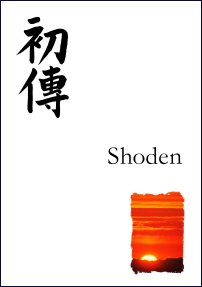 If you’d like some guidance about giving Reiki treatments, I have a whole load of advice and suggestions for you in the Reiki Evolution First Degree course manual.
If you’d like some guidance about giving Reiki treatments, I have a whole load of advice and suggestions for you in the Reiki Evolution First Degree course manual.
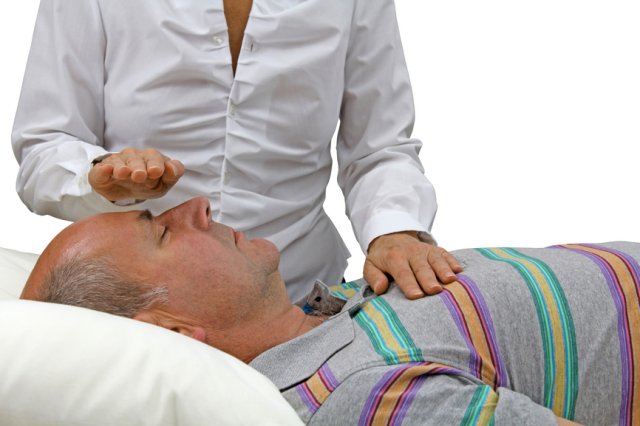

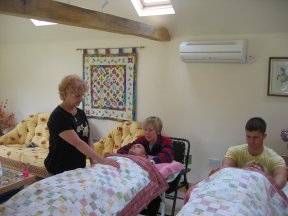
 Hannah Shine is one of Taggart’s Reiki Evolution team of teachers, based in Essex/Hertfordshire. She is also a multi therapist, practising from her home at Hatfield Heath. Her Reiki courses are run from her beautiful summer house in her relaxing garden. Her therapies include homoeopathy, reflexology, Bowen technique, head massage, body massage, kinesiology, EFT (Emotional Freedom Technique) and many others. She is currently doing a Cognitive Hypnotherapy course at the Quest Institute.
Hannah Shine is one of Taggart’s Reiki Evolution team of teachers, based in Essex/Hertfordshire. She is also a multi therapist, practising from her home at Hatfield Heath. Her Reiki courses are run from her beautiful summer house in her relaxing garden. Her therapies include homoeopathy, reflexology, Bowen technique, head massage, body massage, kinesiology, EFT (Emotional Freedom Technique) and many others. She is currently doing a Cognitive Hypnotherapy course at the Quest Institute.